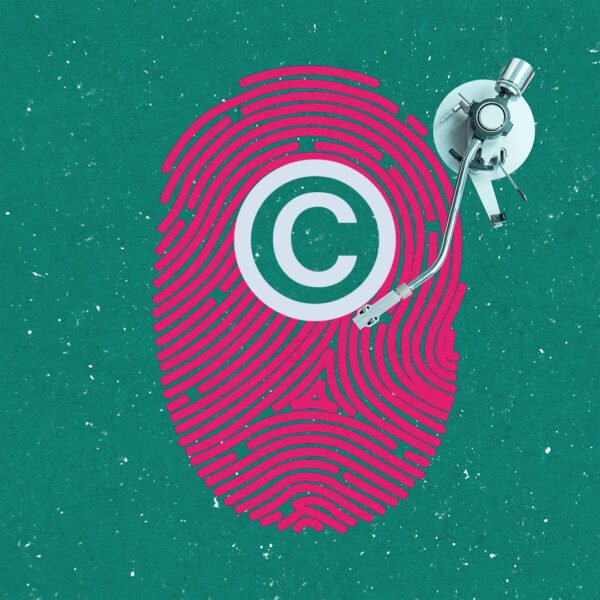Navigating the complex terrain of the publishing industry is a pivotal journey for any writer aspiring to see their work in print. This intricate landscape is populated with a variety of publishers, ranging from established publishing houses to dynamic, independent players, each with its unique preferences, processes, and publishing ethos. Within this ecosystem, the act of approaching publishers is not merely a step but a significant milestone that demands careful consideration and strategic timing.
The importance of timing cannot be overstated. It influences not just the response and the reception of your manuscript but also its potential success in the crowded marketplace. A well-timed submission can align with market trends, publisher needs, and editorial calendars, significantly boosting your chances of securing a publishing deal. Conversely, an ill-timed approach might lead to missed opportunities or prolonged waiting periods. This introduction sets the stage for a deeper exploration into the nuanced world of publishing, emphasizing why understanding the right moment to approach publishers is crucial for authors who aim to transition from manuscript to published work successfully.
Understanding the Publishing Process
The journey from manuscript to print in the traditional publishing world is both fascinating and complex, involving a series of meticulously orchestrated stages that transform a raw manuscript into a polished, market-ready book. Understanding this process is crucial for any writer looking to navigate the publishing landscape successfully.
The traditional publishing process begins the moment a writer completes their manuscript, but the journey to publication involves much more than simply writing a book. It encompasses a series of steps including submission, acquisition, editing, production, distribution, and marketing, each critical to the book’s eventual success.
Your Publishing Journey Awaits – Start NowKey Stages from Manuscript to Print
1. Submission and Acquisition: The initial stage involves submitting your manuscript to publishers or literary agents. This step often requires a query letter, a synopsis of your work, and sample chapters, or, in some cases, the full manuscript. If a publisher or agent is interested, they will request the full manuscript for review.
2. Contract Negotiation: Once a publisher decides to acquire a manuscript, contract negotiations begin. This stage involves discussions with book publishers about rights, royalties, advances, and other contractual details.
3. Editing: After the contract is signed, the manuscript enters the editing phase. This includes developmental editing to refine the structure and content, followed by copy-editing to address grammatical and stylistic issues. The author works closely with the editor to make revisions.
4. Design and Production: With the final manuscript in hand, the book moves into the design and production phase. This stage involves designing the book cover, formatting the interior, and determining the physical specifications of the book. Once the design is finalized, the book is sent off for printing.
5. Marketing and Distribution: Even before the book is printed, the marketing team begins to create buzz around the upcoming title. This involves creating marketing materials, planning promotional activities, and setting up distribution channels to ensure the book reaches bookstores and online platforms.
6. Publication and Sales: The culmination of the process is the book’s release to the public. The publishing house and sales team monitor the book’s performance in the market, and ongoing marketing efforts support sales.
Role of Literary Agents and Editors
Literary agents and editors play pivotal roles in this journey. Literary agents act as intermediaries between authors and publishers, leveraging their industry knowledge and contacts to secure the best possible deal for the author. They provide guidance on manuscript revisions, negotiate contracts, and offer career advice.
Editors, on the other hand, are the unsung heroes who work closely with the author to refine and enhance the manuscript. Their keen eye for detail and deep understanding of narrative structure and character development are invaluable in turning a good story into a great book.
Navigating the traditional publishing process requires patience, persistence, and a willingness to collaborate with industry professionals. Understanding each stage of this journey helps authors set realistic expectations and better prepare for the challenges and opportunities to publish that lie ahead.
Preparing Your Manuscript
Before approaching publishers or literary agents, it’s imperative for writers to ensure their manuscript is not just complete but polished to a shine. A manuscript serves as the first impression of an author’s capabilities, and its quality can significantly influence the decision-making process of publishers and agents. A well-prepared manuscript demonstrates professionalism and dedication to one’s craft, essential qualities in the highly competitive publishing industry.
Importance of a Polished, Complete Manuscript
A polished manuscript is free from glaring errors, inconsistencies, and plot holes, and it showcases the author’s voice and storytelling skills at their best. It’s not enough to have a compelling story; the way that story is told, its pacing, character development, and even the accuracy of its grammar and syntax, all contribute to its potential success. Completeness, on the other hand, means that the manuscript is fully developed—from a captivating beginning to a satisfying end, with all its narrative arcs neatly tied up, providing a clear sense of closure.
Tips for Self-Editing and Peer Reviews
Self-editing is the first crucial step in manuscript preparation. This involves multiple readings to catch not just typos but also to assess the flow, pacing, and structure of the work. Techniques like reading aloud, changing the font size or style for a fresh perspective, and taking breaks between readings can be incredibly helpful. Following self-revision, peer reviews can offer invaluable insights. Trusted writer friends, writing groups, or even interested non-writers can provide fresh eyes and new perspectives, highlighting areas you might have overlooked.
Your Publishing Journey Awaits – Start NowWhen to Consider Professional Editing
Despite thorough self-edits and peer feedback, some manuscripts may still benefit from professional editing, especially if recurring issues are noted or if the manuscript requires more intensive structural work. Professional editors offer a level of detail and expertise that can significantly elevate a manuscript. They can identify weaknesses in the narrative, suggest improvements, and refine language use, making the text as compelling and readable as possible. While professional editing is an investment, it can be a pivotal step in preparing a manuscript that stands out in the submission process.
Conducting Market Research
Conducting thorough market research before approaching publishers is a critical step in the journey to getting your book published. It involves a deep dive into the current market trends within your genre, understanding what is selling, what themes are resonating with readers, and identifying any gaps your book could fill. This knowledge not only helps in tailoring your manuscript to meet market demands but also in crafting a compelling pitch that highlights your book’s potential appeal to publishers.
Understanding the Current Market for Your Genre
Start by examining bestseller lists, reading industry publications, and following book reviews written in your genre. Pay attention to emerging trends, popular themes, and the types of characters and plots that seem to engage readers. This insight can help you position your book more strategically within the market, making it more appealing to publishers looking for the next big hit.
Identifying Potential Publishers and Their Niches
Not all publishers are created equal, and most specialize in specific genres or types of books. Research publishers who have a strong track record in your genre and understand their catalog. This not only increases the likelihood of your manuscript being accepted but also ensures that the publisher has the right expertise and distribution channels to successfully market your book.
Importance of Aligning Your Book with the Right Publisher
Finding a publisher whose interests align with your manuscript is crucial. A publisher who is passionate about your genre and has experience with similar titles is more likely to invest the necessary resources in editing, marketing, and distribution. Moreover, a publisher that understands your book’s market can more effectively position it to reach its intended audience, maximizing your book’s potential success. Therefore, thorough market research and careful consideration of potential publishers are indispensable steps in the publishing process.
Crafting a Compelling Book Proposal
Crafting a compelling book proposal is akin to creating a blueprint for your book’s potential success in the hands of a publisher. A well-crafted proposal not only showcases the essence and promise of your manuscript but also demonstrates your professionalism and understanding of the publishing process. It serves as a critical tool to persuade publishers that your book is worth investing in.
Elements of a Successful Book Proposal
A successful book proposal typically includes a cover letter, an overview of the book, a detailed outline or table of contents, a market analysis demonstrating the book’s potential audience and its place within the market, the author’s biography highlighting relevant credentials and writing experience, a marketing plan outlining the author’s ideas and willingness to participate in promoting the book, and finally, sample chapters from the novel or manuscript.
How to Write a Synopsis That Stands Out
The synopsis is a concise summary of your book’s plot, characters, and major themes, and it’s crucial for catching a publisher’s attention. To make your synopsis stand out, start with a strong hook that encapsulates the essence of your story or the central idea or argument of your non-fiction book. Be clear and concise, focusing on the narrative arc or the logical flow of your argument, and ensure you convey the uniqueness of your work. The synopsis should evoke interest and intrigue, compelling the publisher to read further.
Including Sample Chapters: Why They Matter
Sample chapters are perhaps the most critical part of your book proposal. They give publishers a taste of your writing style, voice, and the ability to develop characters and plot or to argue and analyze a topic. Choose chapters that are representative of your best work and that showcase the strengths of your manuscript. For fiction, opening chapters that set the scene and introduce the main characters are often effective. For non-fiction, chapters that demonstrate your argument’s depth and your analytical skills are preferable. These samples are your opportunity to prove your capability as a writer and the viability of your book project, making them indispensable to a successful book proposal.
Submission Guidelines and Query Letters
Adhering to a publisher’s submission guidelines and crafting an effective query letter are critical steps in the manuscript submission process. These initial interactions can significantly influence a publisher’s first impression of you as an author and the potential of your manuscript.
Importance of Following Publisher’s Guidelines
Publishers’ submission guidelines are not arbitrary; they are designed to streamline the evaluation process by standardizing the format and type of submissions. These guidelines often specify the preferred document format, font size, margin width, and information to include in your submission. Ignoring these instructions can lead to an immediate rejection, as it signals a lack of attention to detail and professionalism. Therefore, always review and adhere to each publisher’s specific guidelines to ensure your submission is taken seriously.
Anatomy of an Effective Query Letter
An effective query letter serves as a pitch to the publisher or agent, encapsulating the essence of your book and why it deserves to be published. A compelling query letter typically includes a concise introduction, a brief and engaging summary of your manuscript, your book’s target audience and market potential, and a short author biography highlighting relevant credentials or experiences. The key is to be clear, concise, and persuasive, making a case for both your manuscript’s value and your capability as an author.
Common Mistakes to Avoid in Submissions
Several common mistakes can undermine your submission efforts. These include failing to personalize the query letter for each publisher or agent, neglecting to mention why you’re approaching them specifically, and not adhering to the prescribed submission format. Overselling your manuscript with hyperbolic claims or underselling it with apologetic language can also be detrimental. Furthermore, submitting a manuscript full of typos or one that hasn’t been thoroughly edited and revised indicates a lack of professionalism and dedication to your craft. Avoiding these pitfalls can increase your chances of making a positive impression and advancing through the submission process.
The Role of Literary Agents
Literary agents are pivotal figures in the publishing world, acting as the bridge between authors and publishers. Their in-depth understanding of the market, editorial insight, and professional networks make them invaluable allies for writers aspiring to see their work published.
Your Publishing Journey Awaits – Start NowFacilitating the Publishing Process
Literary agents possess a keen eye for marketable manuscripts and have established relationships with editors and publishers, which allows them to submit your work directly to decision-makers in the industry. This insider access is crucial, as many leading publishing houses do not accept unsolicited manuscripts and only consider submissions via agents. Agents also have a strong sense of what different publishers are looking for and can strategically place your manuscripts with the most suitable publisher, increasing the likelihood of acceptance.
Moreover, literary agents are skilled in contract negotiation, ensuring that authors receive the best possible terms regarding advances, royalties, rights, and other contractual details. Their expertise can protect authors from unfavorable deals and secure conditions that might be difficult to achieve independently.
Benefits of Having an Agent
Having a literary agent means having a champion for your work; someone who believes in your manuscript and will advocate for its success. Agents provide critical editorial feedback before submission, helping to polish your manuscript to meet industry standards. They also guide career development, advising on market trends and helping to plan future projects.
Approaching a Literary Agent
Approaching a literary agent involves research to identify agents who are interested in your genre and reviewing their submission guidelines carefully. A tailored query letter is essential, highlighting the uniqueness of your work and your personal credentials. It’s also important to be prepared for rejection and to approach multiple agents, as finding the right fit can be a process of trial and error.
In essence, literary agents can significantly amplify your manuscript’s chances of being published by offering professional guidance, editorial advice, and direct access to publishers. Their support can be instrumental in navigating the complexities of the publishing landscape, making them valuable partners in the journey from manuscript to publication.
Navigating Publishing Deals
Navigating publishing deals is a critical juncture in an author’s journey, requiring a clear understanding of what constitutes a fair agreement and the nuances of contract negotiation. A well-negotiated contract not only secures financial benefits but also ensures the rights and creative control of an author over their work.
Understanding a Fair Publishing Deal
A fair publishing deal offers a balance between the publisher’s investment in the book and the author’s rights and royalties. Key components include an advance against royalties, royalty rates, rights (such as digital, audio, and foreign rights), and the terms of the contract. A fair advance reflects both the publisher’s confidence in the book’s potential and the author’s need for compensation, while royalty rates should be competitive and in line with industry standards.
Negotiating Terms
When negotiating terms, it’s essential to focus on areas most important to you, whether that’s the size of the advance, the royalty rate, or retaining certain rights to the work. Be prepared to compromise, but understand your deal-breakers. An agent can be invaluable here, leveraging their experience and industry knowledge to advocate on your behalf. Pay close attention to clauses related to rights reversion, which determine under what conditions rights to the book revert back to you, and non-compete clauses, which can limit future projects.
Managing Expectations and Rejection
It’s important to manage expectations throughout the negotiation process. Not all deals will meet your initial hopes, and flexibility can sometimes lead to a more successful partnership with a publisher. Rejection is also a part of the process; even successful authors face rejection. Each rejection is an opportunity to refine your proposal or manuscript further and to understand better what different publishers are looking for.
Dealing effectively with rejection involves resilience and the willingness to view each “no” as a step closer to a “yes.” Learning from feedback, where available, and persistently improving and re-submitting your work can eventually lead to a successful publishing deal.
Navigating publishing deals is as much about understanding the industry norms as it is about recognizing the value of your work and advocating for its worth. With the right approach, authors can secure deals that are not only financially rewarding but also respectful of their creative rights.
Publishing With Spines
Publishing a book has never been more accessible, thanks to innovative platforms like Spines. They have streamlined the publishing process by leveraging advanced AI for editing, formatting, and publishing, reducing the traditional barriers that many writers face. Authors can upload their manuscripts, and Spines’ intuitive interface guides them through a simple step-by-step process, offering real-time suggestions for improvement and ensuring that the content meets accessibility standards. This includes the automatic generation of alt text for images, ensuring compatibility with screen readers, and providing options for accessible formats. Spines also integrates seamlessly with various digital platforms, allowing authors to distribute their work widely and reach readers across the globe.
With its affordability and ease of use, Spines is revolutionizing the way we think about writing and publishing, ensuring that anyone with a story to tell has the tools and support to share it with the world. Sign up for free today to start your publishing journey.
Your Publishing Journey Awaits – Start NowSeizing the Moment: Perseverance and Timing in the Publishing Journey
In navigating the path to publication, understanding the intricacies of the publishing industry, preparing a polished manuscript, and crafting a compelling book proposal are foundational steps. The role of literary agents emerges as crucial, offering expertise in market trends, editorial feedback, and contract negotiations to guide authors through the complexities of securing a publishing deal.
Recognizing the right time to approach publishers involves a blend of market awareness, manuscript readiness, and personal readiness to embark on the publishing journey. It’s about aligning your manuscript with market demands, ensuring your work is polished, and choosing a moment when your genre is thriving.
Perseverance is the undercurrent of successful publishing. The journey is fraught with challenges, from refining your manuscript to facing rejection letters. However, each step, each revision, and each submission is a stride toward your goal. Embracing feedback, staying adaptable, and persistently pursuing your publishing aspirations are essential. The publishing world is dynamic, with each rejection potentially leading to a better fit and a more fruitful partnership.
In conclusion, the right time to approach publishers is when your manuscript, market research, and personal readiness converge. With perseverance and a strategic approach, navigating the publishing landscape becomes a journey of growth, leading to the ultimate goal of seeing your work in print.
Your Publishing Journey Awaits – Start Now







